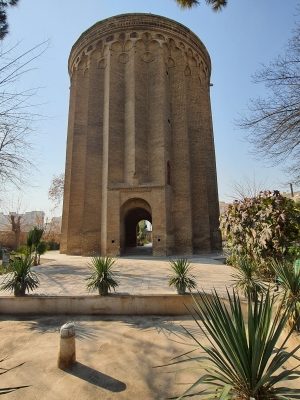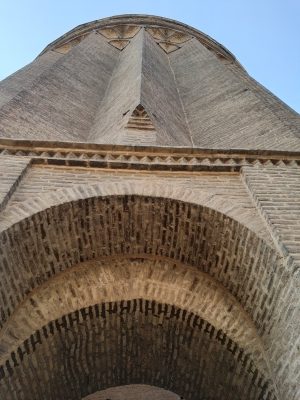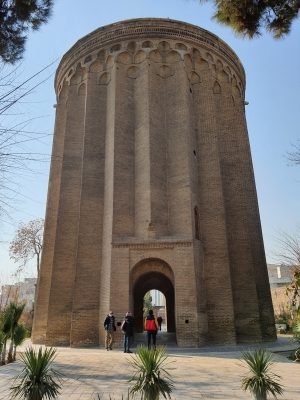Tehran
Tehran also spelled Teheran, located in the north-central of Iran, is the capital of Iran and the center of Tehran province as well. It is a bustling metropole with a population of 15 million and is the third-largest metropolitan in the Middle East. Tehran has been located within the historical region of Media and is a suburb of the Median city of Rhages which mostly appears as a province. Rhages is famous as Ray in modern times.
History of Tehran
Tehran was an ancient village of the historical city of Ray where is one of the oldest cities in the world and dates back to Aryan tribes. During the drilling in Molavi, one of the oldest parts of Tehran city, the skeleton of a lady has been founded which confirms the settlement in Tehran dates back to 7000 years ago. Tehran was chosen as capital for the first time by Agha Mohammad Khan, the founder of Qajar dynasty.
Topography of Tehran
Tehran has been located on a plain of the south foothills of the Central Alborz Mountain range. This Metropole is surrounded by mountains from the north Side and from the south side by Central Desert (Dasht-Kavir) and these factors feature this city with lots of attractions around: lots of peaks above 4000m and 3000m just around the city; Mount Damavand 5609m in 60km distance; 5 ski resort including Dizin, Darbandsar, Shemshak, Khur and Abali; 2 National Parks of Lar national park and Khojir National Park just 35 km far from Tehran; 3 protected area: Varjin, Jajrud and Kavir; Several rocks and climbing site.
Climate of Tehran
Tehran has been located in a vast plain surrounded by Alborz Mountains in the north, northwest and northeast and desert in the south. So its climate is so dry. During the spring it is cool and pleasant, in summer it is too hot and in the autumn it is windy and cold and dry and snowy and cold during the winter.
Attractions of Tehran
Tehran as the most important Iran destination, has some important and fantastic historical monuments, palaces and very precious museums. Golestan Palace, Sa’dabad complex, Iran National Museum and Jewelry Museum are examples of the most interesting sites inside Tehran.
Golestan Palace
Golestan Palace, inscribed in UNESCO World Heritage Site, is one of the oldest historic monuments located in Tehran. The Golestan Palace was built 440 years ago during Shah Tahmaseb of the Safavid dynasty and was renovated and completed in Karim Khan Zand time and Agha Mohammadkhan Qajar who selected Tehran as his capital. Then the arg became the seat of Qajars and the palace became the official residence of the Qajar dynasty. It was reconstructed to the current form in 1865. It is called Golestan because of the main hall in this name in Agha Mohammad Khan Qajar.
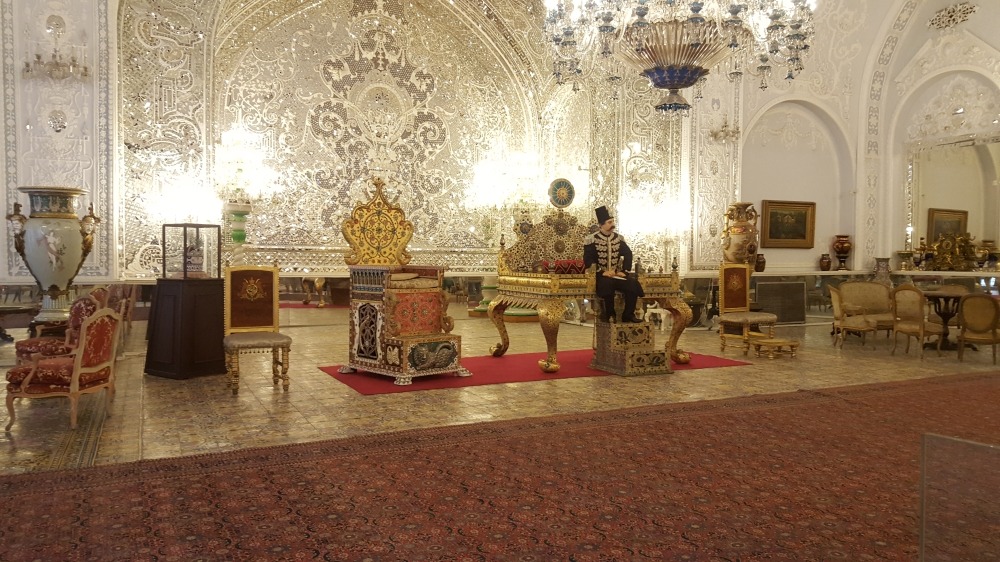
The coronation of Reza Pahlavi was held in this palace on the Marble Throne and the coronation of Mohammad Reza Shah was held in the Museum Hall.
The Golestan Palace is a complex containing a series of royal buildings, gardens and collections of Iranian handcrafts and European presents.
Salam Hall, Ivory Hall, Mirror Hall, Dimond Hall, Brilliant Hall, Shams-ol- Emareh Palace, Abyaz Palace, Building of Windcatchers, Marble Throne, Karim Khani Nook, Pond House, Museum Hall, Museum of Gifts.
Sa’dabad Complex
Sa’dabad complex is a 300 hectares’ complex including palaces, mansions, streets, 180 hectares of natural forests, qanats, galleries and museums. It has been located in Shemiran district. It was built by Qajar Monarch in the 19th century and was expanded by Reza Shah of the Pahlavi dynasty. The main buildings in this complex are: Ahmad Shah Qajar Palace, The Green Palace, The White Palace which is called The Mellat Museum now and it was former official residence of Mohammad Reza Shah and Empress Farah Diba, The Special Palace or Museum of Natural History, the Black Palace or Museum of Fine Arts, Princess Shams Palace named after Shams Pahlavi which is functioning as Museum of Anthropology, Princess Ashraf Palace named after the sister of Mohammad Reza Shah which is functioning as Museum of Glassware and handcrafts, Prince Gholam Reza Shah Palace named after the son of Reza Shah, Palace of the King’s Mother, Prince Ahmad Reza Palace which named after 2nd son of Reza Shah, Prince Abdol Reza Palace named after the son of Reza Shah, Prince Bahman Palace named after the son of Gholamreza Pahlavi which is a training center, Prince Shahram Palace named after the son of Ashraf which is functioning as the Military Museum, Palace of Farideh Ghotbi named after the mother of Farah Diba which is operating as Museum of Artistic Creatures, 1st Palace of Reza Pahlavi which is operating as The Behzad Museum, 2nd Palace of Reza Pahlavi which is functioning as Museum of Treasure, Palace of Princess Farahnaz and Prince Alireza named after the children of Mohammad Reza Shah which is operating as Museum of Mir Emad Calligraphy and Prince Leila Palace named after the elder daughter of Mohammad Reza Shah and it is operating as the Abkar Museum.
The Azadi Tower
The Azadi Tower (means freedom tower) formerly known as Shahyad Tower is a monumental tower which has been located on Azadi Sq. in the west entrance of Tehran. it is 45 meters tall and covered totally by marble. It was commissioned by Mohammad Reza Shah Pahlavi in commemoration of the 2,500th year of the foundation of the Imperial state of Iran. It was designed by architect Hossein Amanat who was tasked to design it after winning a competition. At first it was going to be named “Darvaze-ye Kurosh” (Gate of Cyrus) but Asadollah Alam who was the chairman of the council of celebrations referred to this structure as Darvaze-ye Shahanshahi (Imperial Gate) at the time of centenary celebrations. However, Bahram Farahvashi, the scolar and professor of ancient Iranian languages came up with the designated name of the monument “Shahyad Aryamehr”. It was built in 1971 and officially named the “Shahyad” (Shah’s Memorial) in honor of Mohammad Reza Shah Pahlavi. After revolution, its name was changed to “Azadi” meaning freedom.
There is a museum at the basement of Azadi tower.
Tehran Grand Bazaar
Tehran Grand Bazaar is one of the old historical bazaars of Iran destinations located in Tehran. It is not clear when the Grand Bazaar was appeared but it seems the walls and its passages date back to at least 400 years when the village of Tehran was growing during the time of Safavid Empire, according to the research and travelers’ reports. It had been largely open and only some parts covered according to narrations of Sir Thomas Herbert in his travelogue. The Bazaar began to develop gradually within the last 200 years and it constitutes of several corridors over 10Km in length with many entrances from different sides. Each corridor is a bazaar and has been specialized and dedicated to one craft or good.
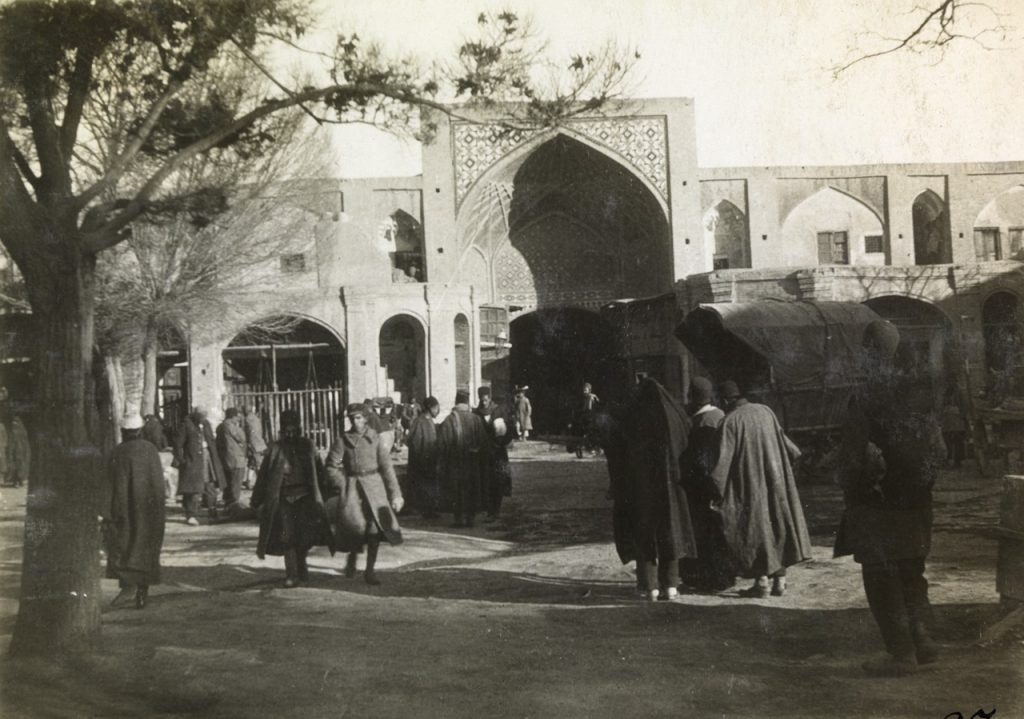
Bazaar of Zargarha (Goldsmiths and Jewelry), bazaar of carpets, bazaar of Parchefrooshha (Mercers), bazaar of Kaffashha (Shoemakers), bazaar of Carpenters, bazaar of Mesgarha (artifacts and coppersmiths) and many other goods.
In addition to shops, the Grand Bazaar contains Mosques, guest houses, restaurants and banks.
Tajrish Bazaar is one of the popular local bazaar located in an old part in the north of Tehran. it is in Shemiranat district neighboring the mausoleum of Imam Zadeh Saleh. It is one of the fresh markets for fruits, green vegetables, delicate and many rare items you may not find anywhere else.
Toghrol Tower
Toghrol Tower also known as Burj Khalifa Yazid, located in Shahr-e Rey, in Tehran province is one of the ancient monuments remained from 12th Century, precisely it is about 900 years old. The tower belongs to Seljuk dynasty during the ruler Toghrolbeik seljuk. There are some discrepancies between historians and experts if it a tomb or not. There are no signs of tomb neither inside nor outside of the tower but some considers it as burial place of Toghrolbeik Seljuk who died in Rey in 1063. Some others consider this tower as the burial place of Khalil Sultan, the son of Timur Lang and his wife Shadalmolk in the 15th century.
This tower is 20 meters tall and made of brick and capped by a conical dome with some unique features. Unfortunately, the dome was collapsed many years ago by an earthquake. The walls are thick which varies from 1.75 to 2.75 meters. The external shape is a polygon with 24 angles. It is very amazing that the tower has a chronical function which working during the day. According to experts’ ideas, the tower is like a clock pointer and the time can be recognized by the sunshine on its congresses. Based on zodiac system, you can recognize the month of the year as well. Another function of the tower was using it to guide the travelers of the Silk Road coming from Khorasan to Rey on foggy nights by lighting a fire on its high barrier. Another unique feature of this tower is when you stand in front of the door and step back about half meter and look at upside to the top of the tower, you can see the face of a lion including the nose and eyes.
